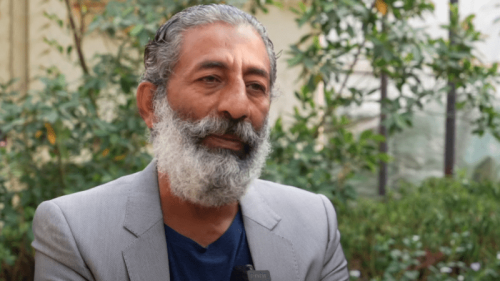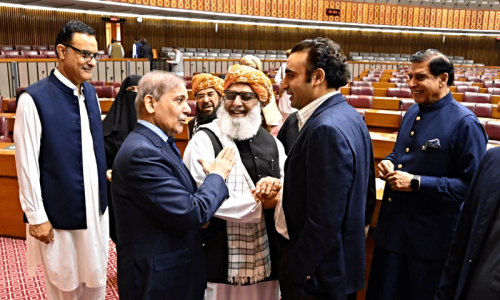The difference between fiction and non-fiction,” writes Arundhati Roy, one of South Asia’s most famous authors, “is simply the difference between urgency and eternity.” In The Ministry of Utmost Happiness, her sprawling new novel consisting of history, romance, political activism and satire, there is an eternal mix of hope and grief woven inextricably together. The novel leaves the reader moved by the fury of its anger — with its constant use of Urdu profanities by its many characters — and the profundity of its compassion for the poor, inconsolable Dalits and Muslims of India.
In her stunning debut The God of Small Things written 20 years ago, Roy focused on the intimate, personal loss in a lyrical, Faulklerian tragedy of an inter-caste family in Kerala. In this, her second work of fiction, the focus is more on public turmoil, resulting in a scarring story of India’s modern history. Hence, the books are, at times, written differently.
In Roy’s own words, The Ministry of Utmost Happiness is an endless “supermarket of sorrow” perpetrated by the virulent Hindu nationalists of the Bharatiya Janata Party (BJP), environmental degradation, searing inequality, brutal repression of the freedom movement of the Kashmiri and Maoist people, the Bhopal toxic gas disaster of 1984 and the Gujarat massacre of Muslims in 2002 where the then chief minister, ‘Gujarat Ka Lala’, looked the other way. She quotes members of the Rashtriya Swayamsevak Sangh (RSS), the extremist wing of BJP, who state that “just as Pakistan declared itself an Islamic Republic, India should declare itself a Hindu one.” She writes: “Some of its ideologues openly admire Hitler and compare the Muslims of India to the Jews of Germany.”
Arundhati Roy’s new novel, longlisted for the 2017 Man Booker Prize, is a story of persecution, albeit one in which hope overcomes grief
All these themes fuelled Roy’s political activism of the last 20 years in which she marched with the downtrodden, poor and persecuted Muslims and Maoists of India and did not write any fiction. It is truly courageous on her part that she has told truth to power and debunked corrosive development plans of making India ‘great again.’ Particularly courageous is her support for the freedom movement of India-held Kashmir. A few years ago she co-authored a book, Kashmir: The Case for Freedom, in which she wrote: “The Indian military occupation of Kashmir makes monsters of us all.”
However, The Ministry of Utmost Happiness is not a political polemic. It is a poignant work of art. The novel opens in a graveyard in a dilapidated section of Delhi: “She lived in the graveyard like a tree. At dawn she saw the crows off and welcomed the bats home. At dusk she did the opposite.” This is the life of Roy’s heroine in the first half of the novel. Her name is Anjum, but she was born a biological hermaphrodite and named Aftab by her Muslim family.
After having suffered the anguish of being a female trapped in a man’s body, one day Anjum watches a charismatic stranger disappear into “Khwaabgah” — the house of dreams. Subsequently, Anjum joins this community of transwomen. These hijras [transgender people] are the novel’s ruling metaphor for sorrow and represent India itself. “Do you know why God made hijras?” Anjum’s housemate Nimmo asks her one day. “It was an experiment. He wanted to create a living creature that was incapable of happiness. So he made us.”
Some of the most evocative writing in this novel is the portrayal of poverty-stricken Muslim Delhi as an elderly grandmother: “Each wrinkle was a street, each street a carnival. Each arthritic joint a crumbling amphitheatre where stories of love and madness, stupidity, delight and unspeakable cruelty had been played out for centuries.”
The second half of the novel introduces a new set of characters and covers a much wider panorama: the ongoing struggle for Kashmiri independence with the beleaguered city of Srinagar as the backdrop. Roy writes of the insurrection in Kashmir: “Death was everywhere. Death was everything. Career. Desire. Dream. Poetry. Love. Dying became just another way of living.”

The protagonist in this half is Musa, a covert Kashmiri freedom fighter. Tilo, an architect turned activist, is the new heroine, whom Musa loves. “This is the worst part of the occupation,” Musa tells Tilo, “what it makes us do to ourselves.” However, Tilo’s story (her character largely modelled on Roy herself) grows complicated. Apart from Musa she has two other lovers — Dasgupta her landlord and Naga, a graduate student of history who becomes a journalist and is secretly working for the government of India. Then there is the sadistic army commander Amrik Singh who runs a torture chamber in Srinagar: “The wires were for applying electric shocks to men’s genitals, the chilli powder was usually applied on rods that were inserted into prisoners’ anuses or mixed into water and poured down their throats.”
The world Roy conjures in this novel is often brutal. A Manichaean landscape prevails: innocence is portrayed by puppies and kittens, and evil portrayed by torturers and rapists. There is an unforgettable irony in the story of Revathy, a Maoist rebel who abandons her newborn child in front of Khwaabgah in Delhi. She discloses in a letter before her death the story of her child, born out of gang rape by six policemen, whom she names Udaya, which in Telugu means sunrise: “I am not her mother. River is her mother and Forest is her father.”
Although the story begins and ends in a graveyard in Delhi — a revealing symbol for modern India — several Western critics have pointed out that the novel lacks the central drama of great fiction. According to them, the two main stories of Anjum and Tilo do not convincingly come together at the end. Also, the novel is bogged down with too many political detours. And therein lies the rub: being an artist and political activist simultaneously is a tricky business, they point out.
In Roy’s defence it can be said that these critics are comparing apples with oranges. Her two novels are worlds apart and have a different focus, as explained earlier here. The Ministry of Utmost Happiness is a vast, hybrid work narrating the modern public history of India and focuses on the consequences of Partition, when “God’s carotid burst open on the new border between India and Pakistan and a million people died of hatred.”
Secondly, these literary critics are missing something more subtle. The detours portraying political violence in the novel are mostly hallucinatory, with echoes of ‘Macondo madness’ a la Gabriel García Márquez. In these so-called irrelevant episodes, Roy is trying to find a way to “bind together worlds that have been ripped apart.” Note that this book is dedicated to the “Unconsoled.” It is therefore a compendium of alternatives — alternate kinships, alternate resistance and an alternate romance.
In this alternate universe, a community of hijras raise a child (Udaya). They move into a graveyard and construct “The Jannat Guest House”. They sleep between the headstones, grow vegetables and create a new kind of family out of the dispossessed. In this graveyard Muslims, Hindus and Christians are buried together. This is magic realism at its best. Here we transcend divisions between the living and the dead. This is an inverse of the Garden of Eden where hope, in the end, triumphs over grief.
The reviewer is a retired diplomat, former editor of The Pakistan Review and bureau chief at The National Press Club in Washington DC
The Ministry of Utmost
Happiness
By Arundhati Roy
Alfred A. Knopf, US
ISBN: 978-1524733155
449pp.
Published in Dawn, Books & Authors, September 17th, 2017
















































Dear visitor, the comments section is undergoing an overhaul and will return soon.